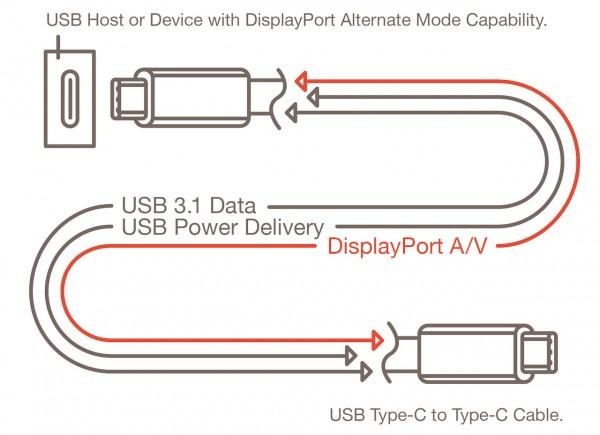Look Out, Thunderbolt: USB Type-C And DisplayPort Are Coming For You
USB Type-C won't just address the perennial frustration of trying to plug in your charger upside-down, but also double as a DisplayPort connection in a move that could well challenge Intel's Thunderbolt. DisplayPort Alternate Mode, announced by VESA today, will mean a single USB Type-C cable will be able to drive a 4K or higher resolution display, along with audio, USB 3.1 data, and even up to 100W of power.
VESA's new connection borrows some or all of the four SuperSpeed USB lanes, taking advantage of the USB Type-C connector to double for DisplayPort's own AUX channel and HPD (Hot Plug Detection) features.
How many of those lanes are used will dictate what sort of resolution can be supported: initially, VESA expects it will use existing DisplayPort 1.2a capabilities for 5.4 Gbps per lane: monopolizing all four lanes will mean up to 4096 x 2160 resolutions, a 60Hz frame rate, and up to 30-bit color.

However, more efficient use of each lane could open the door to far more impressive results. For instance, with the official 8.1 Gbps per lane bandwidth, a Type-C docking station could deliver up to 10 Gbps SuperSpeed USB data transfers, and a 3840 x 2160 DisplayPort monitor, while also powering your laptop and tablet.
In DisplayPort Alt Mode, meanwhile, a whopping 5120 x 2880 resolution screen could be connected, while still getting USB 2.0 data support.
Meanwhile, a break-out adapter will mean that existing DisplayPort monitors will be usable with a Type-C connector, while adapters for VGA, HDMI, and other ports will also be available.
There are clear comparisons to be drawn with Thunderbolt and Thunderbolt 2, Intel's take on high-speed, multi-purpose connectivity. Currently only really a mainstay of Apple's Macs, the port handles both data and video, though peripheral makers – and PC manufacturers – have been relatively slow to adopt the standard.
USB Type-C, however, could have an advantage in that it's being specifically designed to work on smartphones and tablets. As each get more and more powerful, it potentially means powering a full desktop computing experience – with an external display, full-size peripherals, and power – all from plugging in a single cable.
